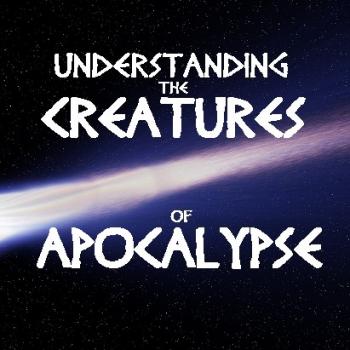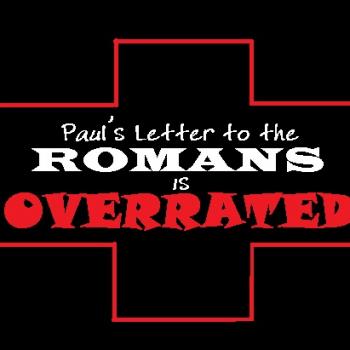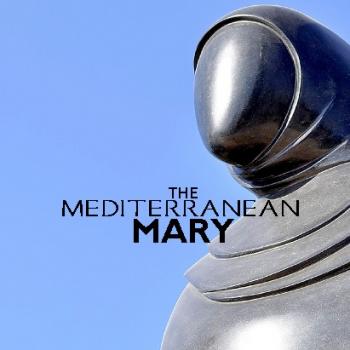
Sayings of Jesus, originally pithy zingers, grew over time into much larger Gospel passages as traditions evolved.
Sayings of the historical Jesus or sayings of the earliest followers of Jesus attributing them to Jesus? The Gospels are full of supposed Jesus quotes, but scholars find it difficult to make sure these sayings’ origins! For a couple of posts, here and here, we have been looking at the difficulties scholars have in distinguishing sayings of the historical Jesus from later things said in the Spirit of Jesus by his subsequent followers yet called Jesus’ sayings nonetheless. This work is not easy! Let’s pick up the thread.
Historical scholars have painstakingly developed various criteria for determining what materials in the Gospels conform to the historical situation of Jesus. This is material in the Gospels traceable back to the Jesus of history, Stage One of Gospel Formation. These criteria also tell scholars what is Stage Two (material from the post-Resurrection situation of the earliest Jesus groups) and Stage Three (the situation of the Jesus groups producing the written Gospels). Again, high probability means moral certainty.
Official Church Teaching and the Sayings of Jesus
The Catholic Church, in official documents, has acknowledged these “Stages” or “Levels” of development in the Gospel materials. The Church doesn’t just “do the teaching”—it gets informed by critical scholarship. Informed by this scholarship, it acknowledges there has been development. According to Vatican II’s Dogmatic Constitution on Divine Revelation, or Dei Verbum (§19), the Pontifical Biblical Commission’s, “Instruction on the Historical Truth of the Gospels” (§6-9), and the Universal Catechism (no. 126), the Gospels emerged through a three-stage process of development—
- Stage One—These are the original words and deeds of Jesus.
- Stage Two—The oral proclamation of the Apostles and disciples (including catechesis, narratives, testimonies, hymns, doxologies, and prayers).
- Stage Three—This would be the Gospel documents themselves.
Understanding the Gospels means understanding these stages. Quite often they all are on display in the same Gospel passage:
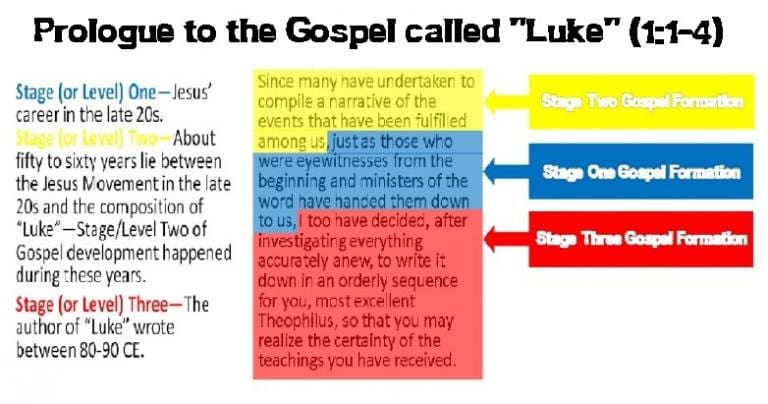
Here is a video presentation on the various scholarly criteria that are employed by biblical scholars:
Tendencies in the Developing Tradition and the Sayings
One of these criteria useful here is the Criterion of Tendencies in the Developing Tradition. Scholars acknowledge a human tendency, when stories or quotations get passed along through time, to embellish with greater detail that which is carried forward. Indirect quotations, with added time and more re-tellings, become direct quotations. Earlier material is thus expected to be simpler. Therefore this Criterion of Tendencies in the Developing Tradition was designed to help scholars comparing Jesus traditions (such as the sayings) to sniff out these tendencies prevailing with passing time.
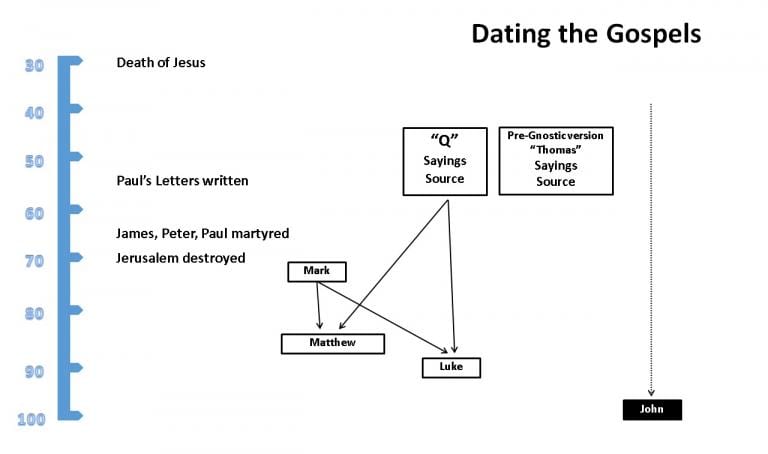
As we explored before, the historical Jesus did not tell allegories, but rather parables. But the Gospel writers, by the time they wrote them down, had turned them into allegories. The Criterion of Tendencies in the Developing Tradition shows that these allegorical augmentations and explanations of the Gospel parables cannot be on Stage/Level One of Gospel Formation (e.g., compare Mark 4:13-20 // Matthew 13:36-43).
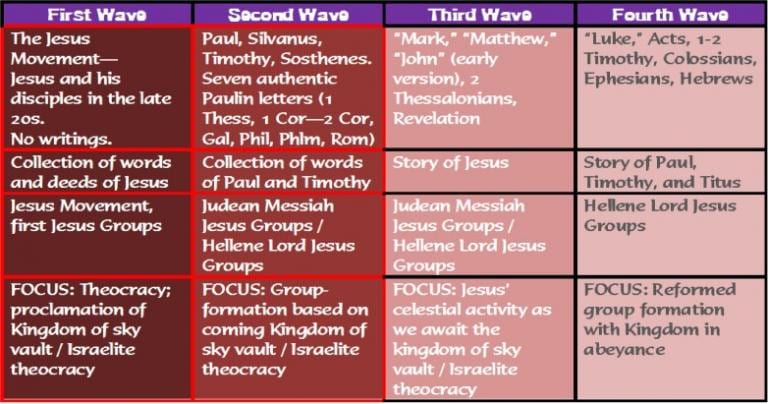
Examples of Developing Jesus Traditions
Mark 4:13-20
Jesus said to them,
“Do you not understand this parable? Then how will you understand any of the parables?
The sower sows the word.
These are the ones on the path where the word is sown.
As soon as they hear, Satan comes at once and takes away the word sown in them.
And these are the ones sown on rocky ground who, when they hear the word, receive it at once with joy. But they have no root; they last only for a time.
Then when tribulation or persecution comes because of the word, they quickly fall away.
Those sown among thorns are another sort.
They are the people who hear the word, but worldly anxiety, the lure of riches, and the craving for other things intrude and choke the word, and it bears no fruit.
But those sown on rich soil are the ones who hear the word and accept it and bear fruit thirty and sixty and a hundredfold.”
COMPARE with Matthew 13:36-43
Then, dismissing the crowds, he went into the house. His disciples approached him and said,
“Explain to us the parable of the weeds in the field.”
He said in reply,
“He who sows good seed is the Son of Man, the field is the world, the good seed the children of the kingdom.
The weeds are the children of the evil one, and the enemy who sows them is the devil.
The harvest is the end of the age, and the harvesters are angels.
Just as weeds are collected and burned [up] with fire, so will it be at the end of the age.
The Son of Man will send his angels, and they will collect out of his kingdom all who cause others to sin and all evildoers.
They will throw them into the fiery furnace, where there will be wailing and grinding of teeth.
Then the righteous will shine like the sun in the kingdom of their Father.
Whoever has ears ought to hear.”
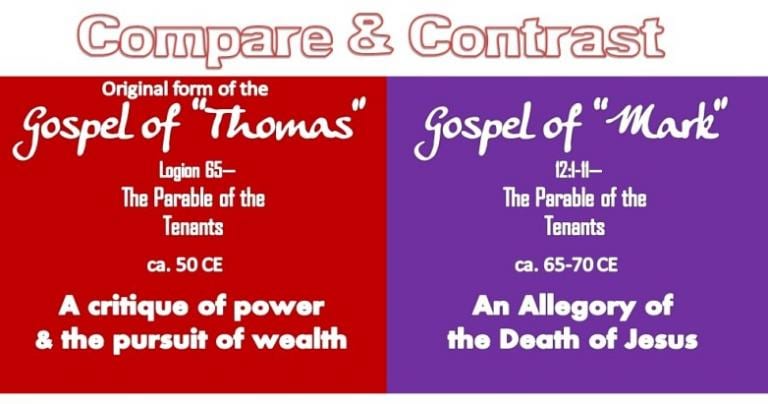
Can we see how the later versions of the same tradition grew in increments from earlier ones? If we can, then the earlier forms have more claims at being authentically Stage/Level One. The Criterion of Tendencies in the Developing Tradition helps us here.
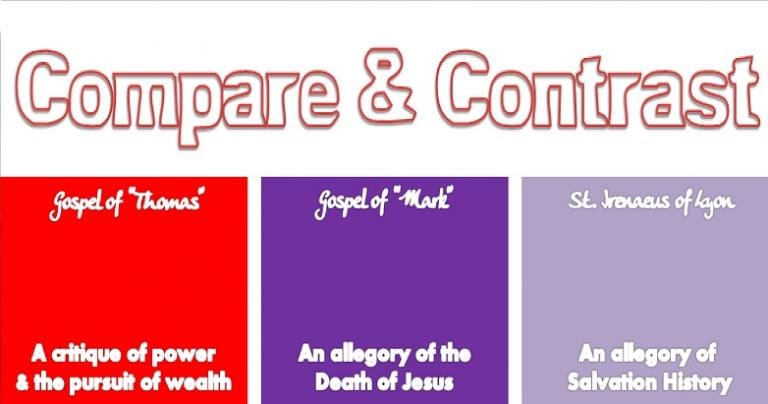
Sayings to Story
To get a better grasp on this, consider this past Tuesday’s Gospel reading—
Mark 2:23-28
As Jesus was passing through a field of grain on the sabbath,
his disciples began to make a path while picking the heads of grain.
At this the Pharisees said to him,
“Look, why are they doing what is unlawful on the sabbath?”
He said to them,
“Have you never read what David did when he was in need and he and his companions were hungry?
How he went into the house of God when Abiathar was high priest and ate the bread of offering that only the priests could lawfully eat, and shared it with his companions?”
Then he said to them, “The sabbath was made for man, not man for the sabbath. That is why the Son of Man is lord even of the sabbath.”
Following the fine scholarship of Dr. Richard Rohrbaugh, let’s put the Criterion of Tendencies in the Developing Tradition to work on this Gospel reading.
One of the Pithy Sayings of Jesus
Biblical Scholars like Rohrbaugh are confident that the historical Jesus excelled at one-liners and zingers. The historical Jesus was a Middle Eastern master of language. He could deliver truth in a fast, pithy verbal package. So Rohrbaugh begins his analysis of this Gospel passage assuming that the historical Jesus was the origin of this one-liner—
Phase One:
Jesus said, “The Sabbath was made for the human not the human for the Sabbath.”
Why the “the human” and not “man”? Doesn’t it say “The Sabbath was made for man not man for the Sabbath”? Rohrbaugh says that the Greek word used here is not the one meaning “male,” andres. Instead, the Greek is the gender-neutral anthropos (“human”). Of course, what was the likelihood that the Galilean peasant artisan and day laborer Jesus was bilingual and spoke Greek?
Of the whole Gospel passage, only this one-liner can be traced back to Stage One, the historical situation of Jesus. Notice that the statement “Jesus said, ‘The Sabbath was made for the human not the human for the Sabbath’” has no other context beside “Jesus said” it! Where did he say this? We don’t know for sure. When did he say it? Probably somewhere in Galilee. What triggered this saying? No clue. Why? Because everything else in the passage comes from Stages Two or Three of Gospel Development. The Master’s saying was collected, recorded, and handed down, but nothing of the exact context.
But remember as things are passed along, the tradition grows incrementally. Embellishments accrue as time passes. Details get added. This happens as the story is retold in new and different contexts.
Formatting the Sayings
Rohrbaugh explains that we can see the next phase of how this tradition was reshaped and formatted thus—
Phase Two
Early Pronouncement Story
Setting:
He was passing through a field of grain on the Sabbath
Action:
The Pharisees said to him, “Look, why are you doing what is not lawful on the Sabbath?”
Pointed Saying/One-liner:
Then [Jesus] said to them, “The Sabbath was made for the human not the human for the Sabbath.”
Rohrbaugh says that through its re-tellings, eventually this one-liner of the historical Jesus became transformed into a “Pronouncement Story.” In other words, the saying has become formatted.
We have uncovered and preserved many ancient instruction manuals for rhetoric and writing from the ancient Mediterranean world. Rohrbaugh explains that we understand how the Greco-Roman schoolboy manuals taught scribes to write. According to Rohrbaugh, these young authors were instructed to carefully embed the sayings of wise and famous people into anecdotes.
This is what is going on in how the Gospel passage evolved. The instruction manuals inform students they must begin their anecdote within a setting. They must indicate the action going on. Then, finally, they are to include the one-liner. Now the saying is “contextualized.”
“Mark” Could Format the Sayings
Isn’t that what “Mark” followed? An ancient Mediterranean scribe, this anonymous author had been trained in these schoolboy manuals.
Jesus was going through the grainfields…
Pharisees tell him why are your disciples doing what is not lawful…
and then the one-liner
Rohrbaugh explains that the style of the story “Mark” uses is a dead giveaway that this formatted form could not be from the time or situation of the historical Jesus (ca. 20s CE). It is Hellene, or Greco-Roman. Israelite scribes of the Aramaic-Hebraic system were not trained thus. Hence, Rohrbaugh asserts, we therefore know that by the time this formatting happened, the one-liner had already migrated into the Greco-Roman world. Indeed, by this time, people were using it who had learned rhetoric from Greco-Roman schoolboy manuals. They tell the Jesus-saying, but embedded into a little anecdote that gives people context.
Sayings Into Narratives
Rohrbaugh says the next transformation to this Jesus tradition came through including the anecdote into a narrative, one which included Jesus’ later followers!
Phase Three
Setting:
HE [Jesus] was passing through a field of grain on the Sabbath;
And as THEY [Jesus and his followers] made their way his disciples began to pluck ears of grain.
And the Pharisees said to him, “Look, why are you doing what is not lawful on the Sabbath?”
Then [Jesus] said to them, “The Sabbath was made for the human not the human for the Sabbath.”
Do you see how in Phase Three of the developing tradition of this one-liner, Jesus’ later followers, living decades after his death, have included themselves into the narrative? Rohrbaugh invites us to note carefully the singular “he” and the plural “they”—
One Sabbath he was going through the grain fields;
And as they made their way his disciples began to pluck ears of grain.
According to Rohrbaugh, the singular “he” and the plural “they” is yet another dead giveaway, this time informing us that this narrative can only be a later addition. So a one-liner of Jesus has been first turned into an anecdote, and then later on, narrativized. Rohrbaugh tells us that this is not unlike what preachers do with Jesus today! As they preach, they tell stories, and contemporize things by inserting the audience into their story.
Sayings Related to Old Testament
Rohrbaugh says the next step would be to relate this anecdoted, narrativized one-liner of Jesus to the greater tradition of Israel. The scribes who wrote the canonical Gospels may have been trained as Greco-Roman writers, but they were Greek-speaking Israelites.
Phase Four
He was passing through a field of grain on the Sabbath;
And as they made their way his disciples began to pluck ears of grain.
And the Pharisees said to him, “Look, why are you doing what is not lawful on the Sabbath?”
And he said to them, “Have you never read what David did, when he was in need and was hungry, he and those who were with him? How he entered the house of God, when Abiathar was high priest, and ate the bread of the Presence, which is not lawful for any but the priests to eat, and he also gave it to those who were with him?”
Then [Jesus] said to them, “The Sabbath was made for the human not the human for the Sabbath.”
Explaining Phase Four
Rohrbaugh says that this narrative was further embellished in Phase Four of its developing tradition. An Old Testament quotation got inserted into the narrative to now explain or help interpret everything. Both ancient and modern preachers delight in this—locate and use a story, anecdote, or quotation from the Hebrew Scriptures to better understand the story of Jesus. Rohrbaugh says sermons regularly have always been constructed this way.
So what happened here? According to Rohrbaugh a preacher at some point inserted the story of David taking the bread of the Presence and feeding his men with it. Does that really have anything literally to do with what Jesus or his disciples were doing? Not really. And did the historical Jesus himself ever make such a comparison between David and his own dietary practices? Probably not. But the preacher made it work—it must be fine for Jesus if David did it!
Concluding the Recontextualized Sayings
Rohrbaugh says the next step is to conclude the whole story in a fitting way. This time, something about Jesus’ cosmic identity gets expressed.
Phase Five
He was passing through a field of grain on the Sabbath;
And as they made their way his disciples began to pluck ears of grain.
And the Pharisees said to him, “Look, why are you doing what is not lawful on the Sabbath?”
And he said to them, “Have you never read what David did, when he was in need and was hungry, he and those who were with him? How he entered the house of God, when Abiathar was high priest, and ate the bread of the Presence, which is not lawful for any but the priests to eat, and he also gave it to those who were with him?”
Then [Jesus] said to them, “The Sabbath was made for the human not the human for the Sabbath.
So the Son of Human is lord even of the sabbath.”
Explaining Phase Five
In Phase Five, someone added a conclusion. Jesus is identified as the cosmic Son of Human, or Son of Man. This is not unlike what last Sunday’s Gospel reading says about the Johannine Jesus—
John 1:29-30
The next day [John] saw Jesus coming toward him and said, “Look!—the Lamb of God, who takes away the sin of the world. He is the one of whom I said, ‘A man is coming after me who ranks ahead of me because he existed before me.’”
Context scholars Rohrbaugh and Bruce Malina inform us that ancient Mediterraneans held that the character of something got defined by its form or physique. Is it surprising that lions have both a fiercely powerful form and character? Therefore Mediterraneans were fond of employing animal analogies to comment on, or even to praise, human beings. To all Mediterraneans, the most manly of all beasts was the ram. Unlike shameful goats, rams went to their deaths stoically, without complaining. Whereas shameful goats allowed other males access to their females, an honorable ram might have a thousand ewes but would rather die before granting another male sexual hospitality.
According to Malina, Rohrbaugh, and John Pilch, ancient Mediterranean peoples shared a common sky lore interpreted particularly according to their respective people’s tradition. All Mediterranean peoples understood the constellation known as “the Lamb” was the first and greatest of the celestial entourage of the Highest God. This great spirit, known by the Latins as “Aries,” was the first of the sons of God, first of all angelic beings created by God. In the Bible, “son of…” means “having the qualities of…”
This cosmic “son of Man” constellation was believed to be the ruler of the poles (or polokrator). Therefore he ruled over any and all alterations that happened to the universe. This “Son of Human” or “Sky Vault Man” was indeed ruler of the Sabbath. Could the Markan Jesus be this “Son of Human”? We are still a far cry from the Christologies of Nicaea or Chalcedon, but Jesus groups of every age must grapple with the Mystery of Jesus. We believe the Spirit is always with us in the messiness of our grappling.
What Do We Know?
Taken all together, this is good sermon! Rohrbaugh says it all began with a zinger, a one-liner, with saying traced back probably to the historical Jesus—
“The Sabbath was made for the human not the human for the Sabbath.”
And the end result? Mark 2:23-28 is what grew out from that simple saying, says Rohrbaugh.
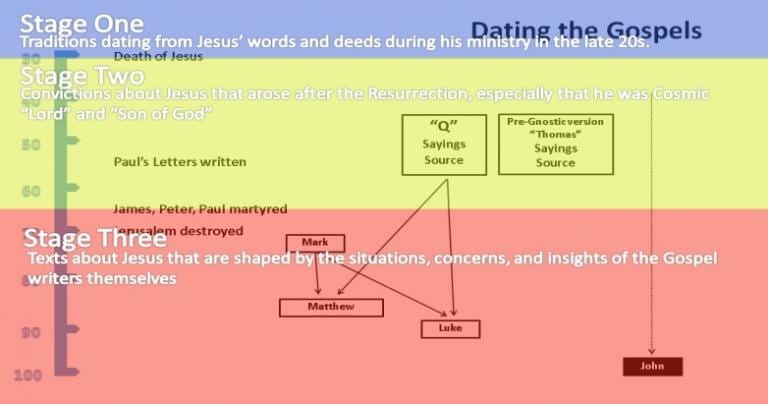
Are you beginning to see that our Gospels grew incrementally as people used and reused the Jesus sayings? Do you see how they developed through newer contexts, with added Old Testament materials, and how new conclusions and interpretations of them were drawn? If you do, how could the Gospels ever be mistaken for 21st century Western biographical histories of Jesus? This shouldn’t be possible because the Gospels are instead portraits of theological preaching about Jesus from the earliest Jesus groups.
Let’s explore more of this, soon.



